Amazon updates millions of products' pricings every 10-15 minutes so, why wouldn't you?
According to the last known public statistics published by Business Insider, Amazon makes 2.5 million price changes per day. And this data corresponds only to the Amazon Retail division! This means that, as of today, these 2.5 million changes will have multiplied, for sure.
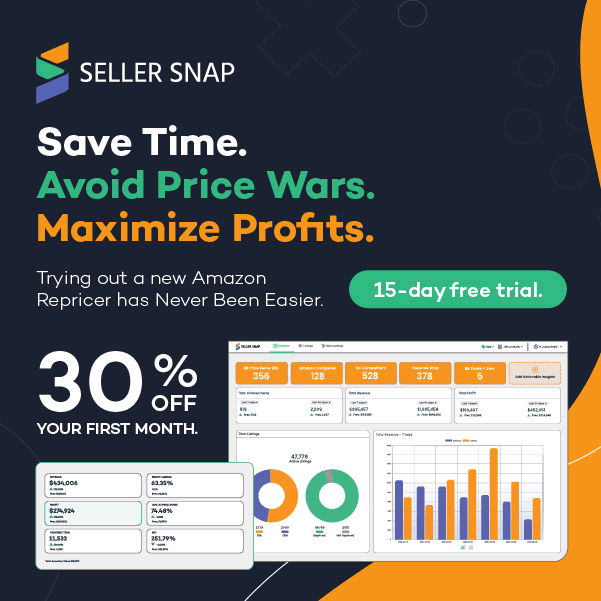
Amazon Retail (the division of Amazon that buys products and sells them directly) has its own repricing algorithm that scans prices of direct and indirect competitors inside and outside Amazon to always get the lowest price.
In addition, on Amazon's Marketplace and from your Seller Central console, an Amazon Seller is able to update his prices and even do basic repricing by setting a minimum and maximum price for the product. As Amazon Sellers, we can also automate repricing from the Seller Central dashboard.
To give you an idea of how important price changing is for Amazon, the first public patent assigned to the company where repricing is mentioned is from 2003 and is called “Collecting competitive pricing information via a merchant web site for use in setting prices on the merchant web site“. This means that Amazon was probably already doing repricing before 2013.
One of the sentences that strikes me the most is
In some embodiments, the report indicates a relative urgency for repricing the items shown in the report based upon the number of shopper price submissions submitted for each item
In other words, as early as 2003, Amazon's patents were already talking about the urgency of repricing a product. So, today, we'll learn 18 Amazon repricing strategies you can use to maximize your Buy Box quota.
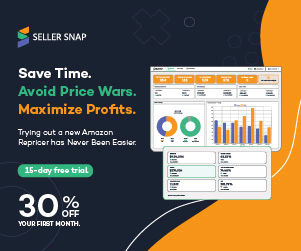
Simple and advanced Amazon repricing strategies
Let's check out all the Amazon repricing strategies that exist, or at least the ones I know about.
1. Using AI Repricer rules
Artificial intelligence and algorithms are advancing at a tremendous speed and can learn from customer and competitor behavior.
There are many repricing software programs that have AI-based rules, allowing you to automate pricing faster and avoid errors.
2. Manual repricing
A classic that has been used by Amazon since the dawn of time. In fact, Amazon's own repricer works like this.
However, it is not very scalable. Manual repricing of 50 SKUs is not the same as manual repricing of 2,000 SKUs.
In addition, manual changes are slow and can cause errors.
3. Create custom rules
In this case, it is a matter of creating a repricing target/goal and creating rules to set the final price.
Most repricing tools allow you to create “if this, then do that” conditions.
For example, if my main competitor is selling below MAP, we can tell the repricer not to match that price, as we would lose money.
4. Fixed price
In this case, there is not much of a secret. It is simply a matter of not making any changes to your prices.
5. Competing against yourself
This is a strategy only found on Repricer.com's repricer. It is that your Private Label products (those that are very similar) compete with each other and reprice each other. Very interesting to experiment how much one product is capable of stealing sales from another.
6. Follow BuyBox
This Amazon repricing strategy consists in following the seller who has the BuyBox to immediately choose a quantity or a percentage to compete against him in each of the Fulfillment methods: FBA, FBM and SFP.
For example, you can tell the repricer to “Follow BuyBox” and, if the Seller who has the BuyBox is FBM/FBA and we are FBA/SFP, to increase/decrease our price by a fixed amount or %.
7. Follow competitor / Lowest competitor / Multiple competitors
This strategy allows you to enter a seller ID of a competitor, including Amazon Retail itself, and choose a fixed % or amount to compete against.
If you don't know how to find that ID, here is a post: Find your Amazon seller ID and merchant token
8. Follow SFP / FBA / FBM highest / lowest competitor
A strategy similar to the previous one, but this time it will follow the seller who wins the Buy Box using any of the three fulfillment methods.
This will allow us to establish rules such as:
- If the Seller who has the BuyBox has Fulfillment with FBA, increase / reduce my price by this fixed amount / %.
- If there are several Sellers sharing BuyBox quota, one is FBA and the other one too, but one has a higher price and the other one has a lower price, follow the one with the lower price and increase / decrease my price by this fixed amount / %.
- If there are several Sellers sharing BuyBox quota, one is FBA, the other FBM and the other SFP and they have 3 different prices, follow the one with the highest price and increase / decrease my price by this fixed amount / %.
9. Follow several related ASINs
Repricing is still possible if you are the sole seller of your products (private label).
This strategy tries to identify which products compete with you and reprice them in order to be the most attractively priced product.
A good way to get your competitors is to enter your main ASIN in Helium 10's Cerebro and hit the “Get competitors” button.
10. Periodic price changes
This Amazon repricing strategy tells the repricer to change the price by X amount or percentage every X amount of time.
It is useful for Private Label products where we are the only seller.
11. Repricing based on the last sale
This strategy is especially useful when we have not made any sales for a few hours or even days.
What we say to the repricer is something like “if I haven't made a sale in 24 hours, match the price of the product to the price of the last sale that was made”.
It is possible to establish a condition and a pre-adjustment of prices based on when the last sale was made.
12. Sales Velocity Repricing
This strategy tries to change prices based on how quickly your products sell.
For example, increase the price if the sales velocity is good or lower it if the sales velocity is slow. The secret of this strategy is to find the ideal price according to market demand in real time.
13. Inventory-based repricing
This repricing strategy is adjusted according to the available units we have in FBA or FBM and the speed of sales in the last few days.
In addition, we can add the Inventory Age factor, to liquidate products that have been in Amazon warehouses for more than 3 months, for example. Also, products that are about to incur penalties for long-term storage fees should be liquidated.
Some repricer even include the option to plug-in your inventory management software to use this repricing strategy in real time, for example:
- BQool integrates with InventoryLab
- Repricer.com integrates with SKUbana, Linnworks or SKU Grid
- SellerSnap integrates with InventoryLab and SKU Vault
14. MAP-based repricing
When you are reselling some brands, you have obligations regarding the Minimum Advertised Price.
If we give that MAP Price to our repricer, he will know that he must not exceed it, so as not to have legal problems with the brand.
Some Sellers take advantage of the fact that on weekends the Key Account Managers of the brands have free time and are not monitoring prices, to exceed the MAP by undercutting it, making aggressive discounts.
15. Suppresed Buy Box repricing
Occasionally, Amazon deletes a BuyBox because it finds the same or very similar product on or off Amazon at a more attractive price. Or because our product is priced too high and is not competitive.
This strategy seeks to perform repricing actions at the moment when Amazon deletes the BuyBox. If we do this using the IA, the repricer will search and identify the last time the Buybox was not deleted and match that price.
16. Maximum price / Minimum price
A repricing classic and the type of repricing we can do from Seller Central without using tools.
Our final price will fluctuate between a minimum price (floor Price) and a maximum price to always try to win the BuyBox.
17. BuyBox win repricing method
This repricing method (which is quite aggressive) seeks to gain as much BuyBox share as possible.
The repricer will find the lower price and try to match or beat it. This is a dangerous strategy for our commercial profit margin.
18. Yo-Yo method
Last but not least. This is a method found in repricers such as SellerSnap that seeks to create a virtuous loop by increasing the price to the maximum and then returning to an automatic repricing method such as, for example and in the case of SellerSnap, Game Theory Repricing.
Repricing software
As we have already demonstrated throughout this post, there are various repricing softwares available depending on your requirements. Here is a list of the ones we think are the best:
With all this information, we hope you have discovered the best Amazon repricing strategies and tools for repricing so… let's repriceeeeee!
More posts
About the author
Jordi Ordonez
I work as an independent eCommerce and Amazon consultant.
Clients
Estrella Damm, Intersport, Bella Aurora, Lladró, Textura Interiors, Nice Things Palomas, Castañer, Due-Home and many other clients.
Lecturer & Teacher
I teach and have been a speaker at: Meet Magento, Prestashop, Prestashop Day, SEMRush, Cambra de Comerç Barcelona, ClinicSEO, Ecommbeers, Ecommbrunch, Ecommercetour.com, Ecommfest, EOI, ESIC-ICEMD, Foxize, Generalitat de Catalunya, Inesdi, Quondos and The Valley. In addition, I have done in-company trainings for brands such as Orange and Adidas.
Writer
I collaborate writing articles for Helium 10 blog, Shopify, SEMRush, La Vanguardia, eCommerce-news.es, Marketing4ecommerce...
Partner
Helium 10, Jungle Scout, Avask, Sellzone, Helium 10 Seller Solutions Hub Partner, SaaS4Marketing, H10-wp.com and FBASuite.com
Social
LinkedIn, Twitter, Wikipedia, Youtube, Quora, ISNI 0000000513224289, About Jordi Ordonez










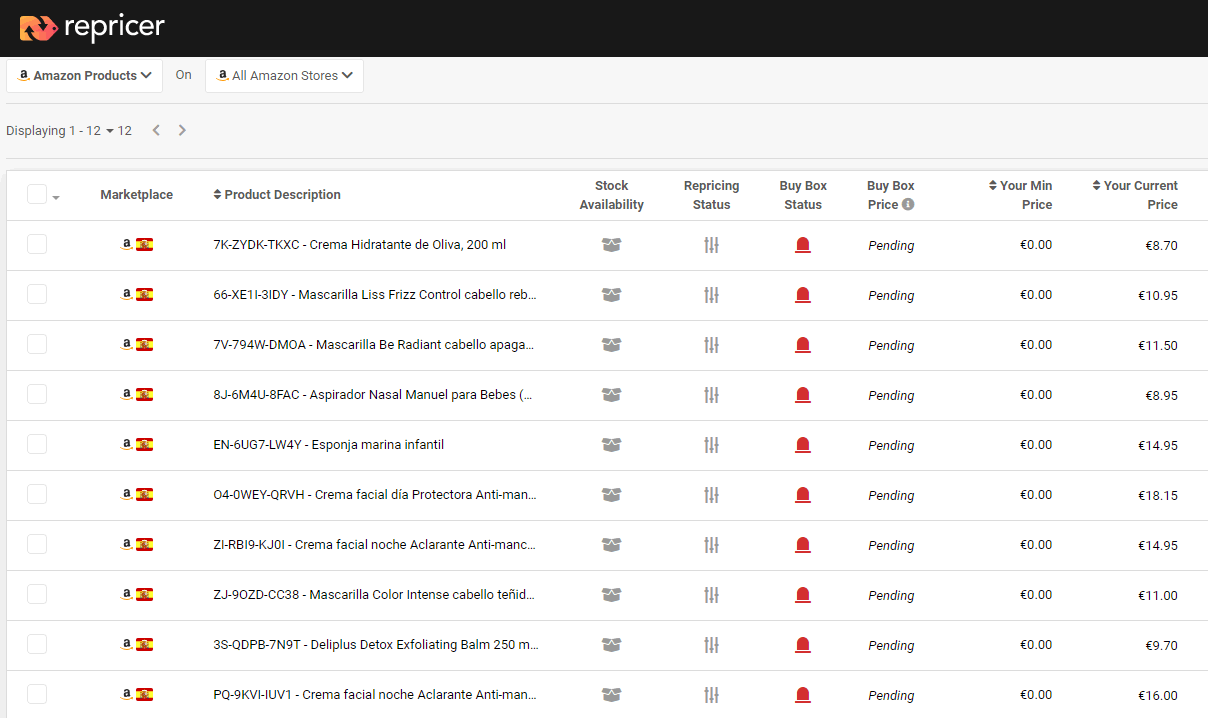

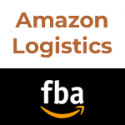
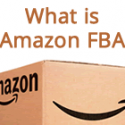
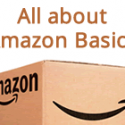
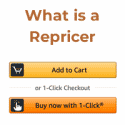

Ich glaube, dass AI Repricer Regeln zu kompliziert sind. Manuelle Preisanpassung ist besser!